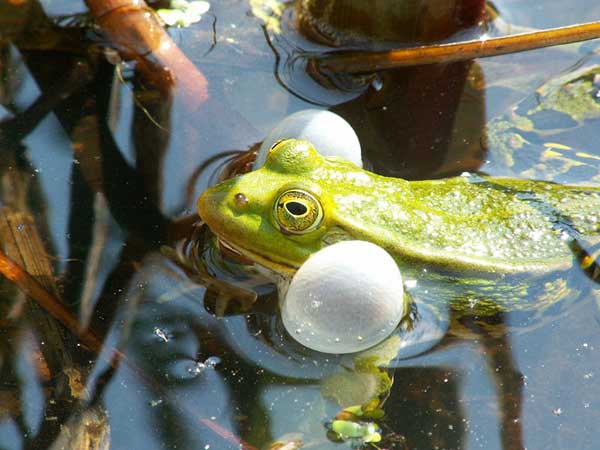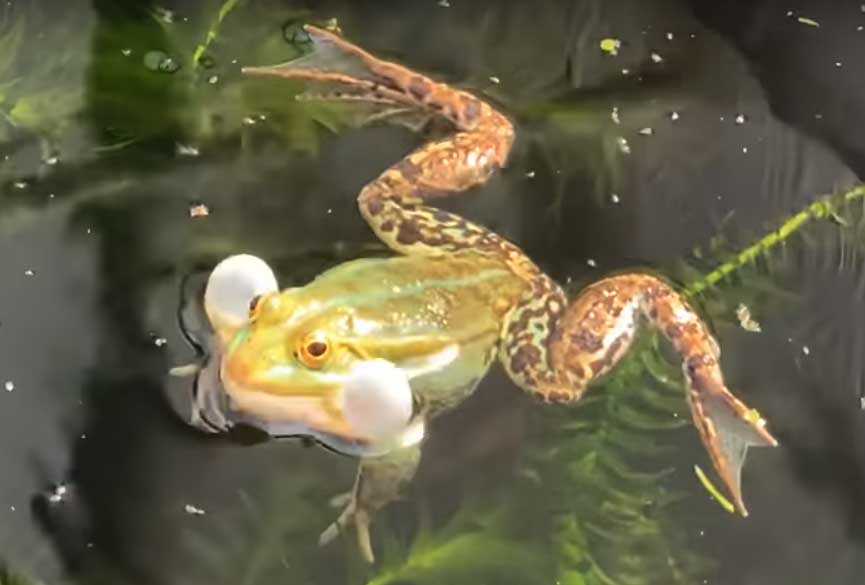Pool frog
Pelophylax lessonae was Rana lessonae
Grenouille de lessona
The Pool frog is the smallest of the so called Green frogs in Europe, males 4.5 to 5.5cm and females 5.5 to 6.5cm. It has a somewhat stocky appearance and the nose has a pointed appearance when viewed in profile. Oval horizontal pupil, the Iris is golden and is often mixed with black. The skin on the back is warty in varying degrees; usually the colour is grass green with the upper surfaces of the rear legs brownish. Some individuals are brownish on the back but they conserve the green on the head and flanks. The back is marked with small irregular blackish spots. Exceptionally they can be blue of a varying intensity
In France it can be found in most of the North and North east of the country but its presence is still poorly understood, particularly in the centre and south east. A mixed population of lessona-esculenta, (Pool frog-Edible frog) is known in Alpes-maritimes. The pool frog is in decline in Belgium and Poitou-Charentes in France. It uses lakes, ponds, canals and land areas that flood. It is less attached to the aquatic zones than the Marsh frog and will spend much of the year on land where it searches for food and also hibernates. Hibernation takes place from November until March a few centimetres beneath dense moss, heaps of dead leaves, forest debris or beneath soft soil, this can be 10km or more from the breeding zone.
Breeding starts at the end of April when they will travel as far as 400 metres in one night to reach their breeding zone which they remain loyal to each year. Females release between 800 and 2000 eggs which take 2 to 4 months to attain metamorphosis.



